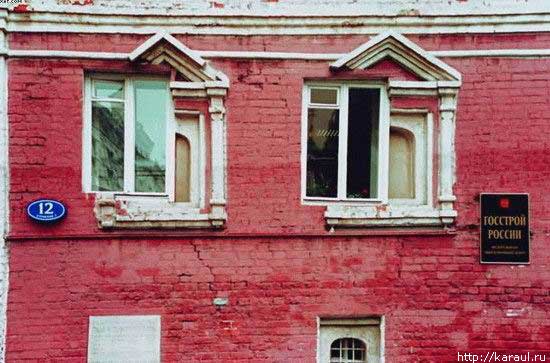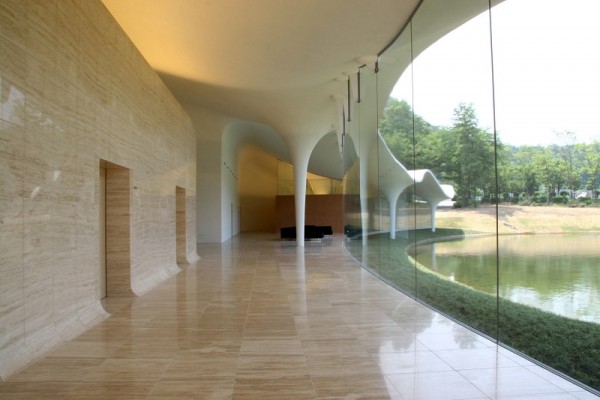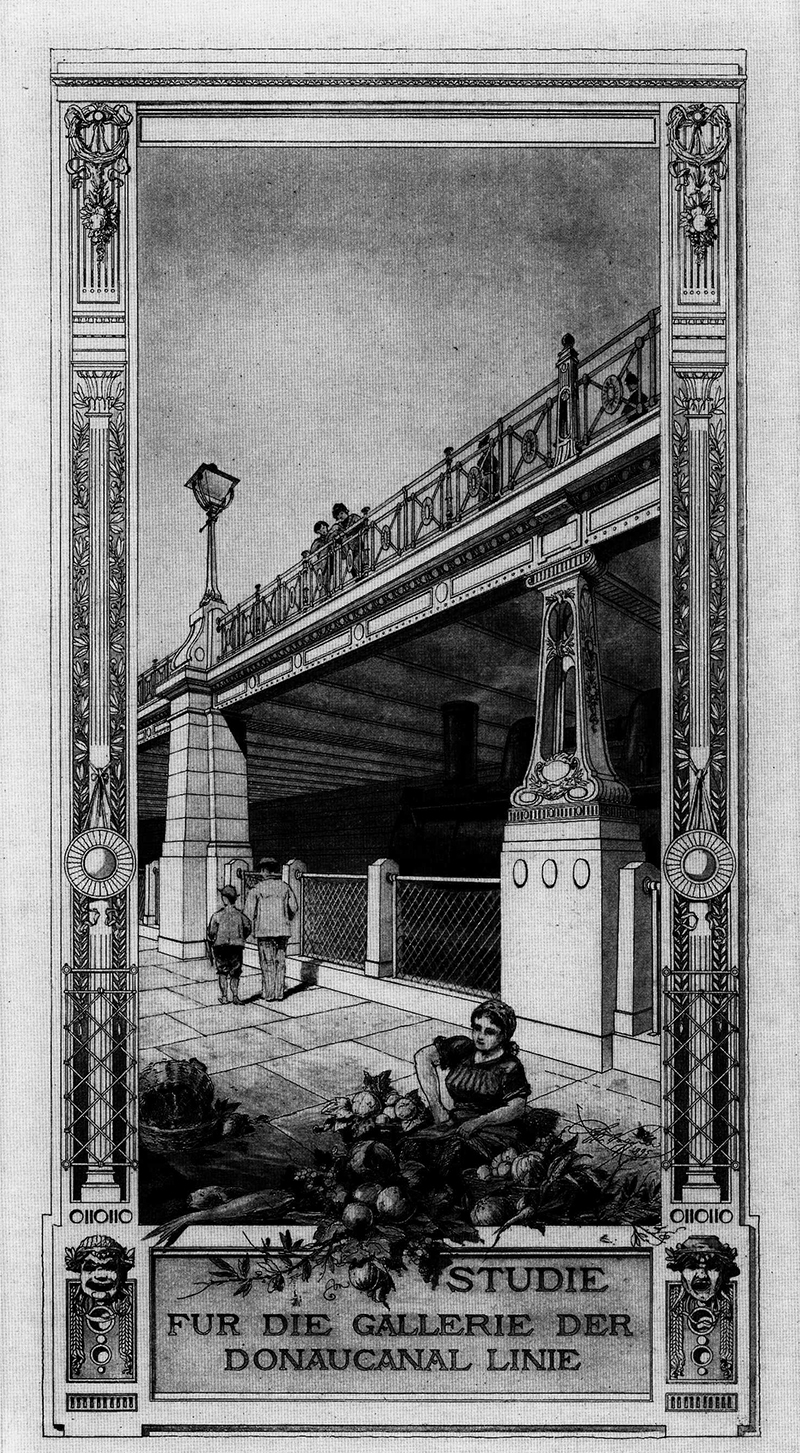The ugly and the ordinary before “The Ugly and The Ordinary.”
Support the Zoning Rewrite: Accessory Apartments
Accessory units give homeowners flexibility in the use of what are often large properties. The extra income is nice to have for some people. For others, it’s a lifejacket. When my class at yale designed and built a house, the client required a rental unit specifically because it added financial stability for the low-income family that bought it. For renters, it could bring a large amount of housing stock to the market with marginal capital costs and a lower profit motive, keeping prices down.
For communities, the economic diversity added to the vast single-family family neighborhoods will bring vitality and justify transportation improvements that all can enjoy. By allowing the elderly to downsize in place, welcoming new families, neighborhood ties stay strong while adding new residents. In most of Northwest, parking remains ample, so the addition of a few small households will have a very minor impact.
But I don’t want to overstate the effects. For the most part, making them “by right,” will only legalize already existing apartments. Rental units in R-1/2/3 zones are widespread already, despite being illegal. Furthermore, because the regulations were written in 1956, when domestic help was more common, if the renter picks up the paper or waters plants one weekend when the owner is on the Eastern Shore, the apartment is legal. That’s silly.
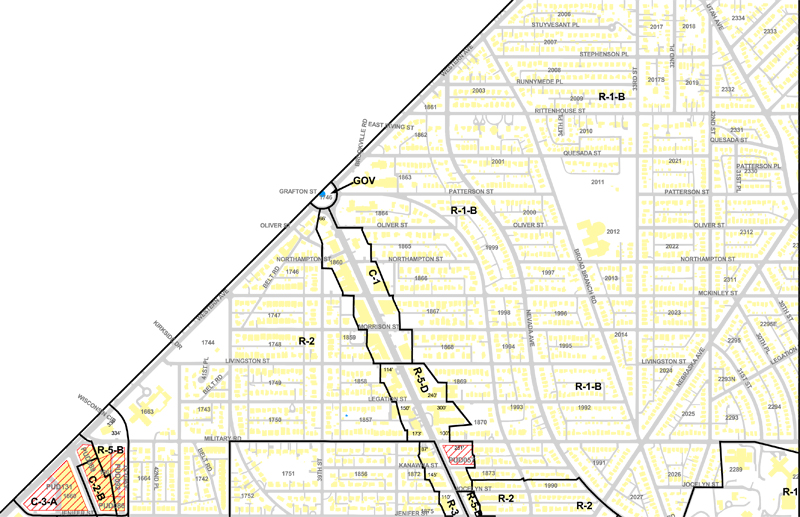
Now, a significant amount of opposition to the accessory provision has come from Chevy Chase residents, who claim that the provision is forced on them as “once size fits all.” But, in fact, zoning hundreds of acres as single family homes without any community nodes is the essence of “one-sizing.” Permitting a little flexibility allows for fine-grained land use decisions. It’s important to remember that although regulations keep the city safe and clean, but they should be justified. Chevy Chase hasn’t shown why it’s special.
Learn how to testify in person or by mail. The zoning commission is independent of the council and take comments seriously. Your communication with them matters.
BONUS: To share the nature of this opposition, follow the break to read testimony from one of the most outspoken opponents, Linda Schmidt, to see how extreme you have to get to criticize the proposal. Learn why some world-weary advocates call detached accessory apartments “schmitthausen.” These comments are fairly typical from her.
Continue reading ➞ Support the Zoning Rewrite: Accessory Apartments
Washington Post on ShotSpotter
In 2007, the District assumed ownership of the detection system, expanding its coverage in the years that followed. ShotSpotter now reaches into six of the seven police districts and covers about one-third of the city. Its greatest coverage is in Southeast and Northeast, records show.
ShotSpotter is also linked to a system of closed-circuit cameras, which police hope will capture the aftermath of shootings in real time. To guard against vandalism, officials do not publicize the sensors’ appearance or reveal their locations.
Also explained is one of the more useful distinguishing properties of gunshot noise:
The blast of a gun is different from other explosive sounds because it is directional, meaning that the noise changes its frequency as the bullet moves through space. A person may hear a gunshot a half-mile away if the gun is fired toward him. But a person 200 yards away may hear nothing if the gun is fired away from him.
It’s worth a read.
McMillan Commission Park Plan

It’s been a while since I looked at Tenleytown’s history, but I came across this map on Wikipedia. It shows the changes proposed in 1902 by the McMillan Commission to the Permanent Highway Plan. Meant to make DC more befitting a national capital, it generated several key ideas that would change Tenleytown, beyond its integration into the suburbs:
- A park on the site of Fort Reno / Reno Town. The circular parkland shown in the upper left-hand corner radiates out a quarter of a mile from the original point of greatest natural elevation. This is now obliterated by the water tanks. Reno Town certainly still existed at this time, but the political maneuvering that erased the black community from Tenleytown hadn’t begun. It’s possible that Sen. McMillan was collaborating with Sen. Newlands, the founder of Chevy Chase, to suggest this, but I have no proof.
- The Fort Circle Parks system appears here for the first time. The country was beset by nostalgia for the Civil War at the time, so it’s not surprising that the planners decided to commemorate those events with a set of parks that incorporated the former sites of the forts that protected Washington during the war. This plan would undergo many revisions, slowly becoming more of a highway until it died in the early 1960s.
- Yuma street is depicted as a parkway, running from the daylight of Murdock Mill Creek, into Soapstone Valley. Very little evidence for this idea remains. Principally, Yuma’s right of way is slightly wider than the surrounding streets.
I have seen this map in person at the Washington Historical Society, and there are lots of fascinating details. I will try to get a larger upload, but enjoy this for now.
The becoming-unmotivated
The ear is a slave and maybe that’s OK
How does it make you feel? Have you ever imagined, sitting on the metro, that the guy across from you is belting out that Ronnie James Dio song you really love? Is that a fender in your pocket, or are you just happy to see me? Can you use your Zune like an Youtube Doubler?
Watch it without the sound. Listen to it without looking at the screen. We’ve become very comfortable with schizophonia because it’s convenient for music. Try to play a field recording and we have a sense that something isn’t right. Have you ever tried to make Subway Dio perform 4’33”?
The little clues do more than we admit, and you have to get creative when you don’t have them. But if we put an video up there, we’re back in the real world, I guess. We desperately want to believe that Lorde is singing right to us. It’s teasing, with the same tinge of sadomasochism as the makeup. Is the body language related? Would we habituate without the “Yeah”? I just want to relate.
We all know video is weird, but it’s kind nice of Joel Kefali to point it out.
Related, also from the antipode:
I wonder what it sounds like in that park? Do the millions of fragments vying for your attention look like how it sounds, anyway? What would Adjaye think?
See Toyo Ito speak at the NBM
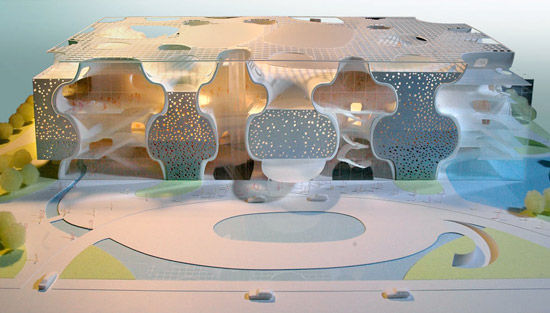
I think it’s worth the time of every Washingtonian who thinks they know what’s up in architecture to hear Toyo Ito speak at the National Building Museum. Ito won the 2013 Pritzker Prize, and has produced some pretty astonishing buildings, most notably the Taichung Opera House, sponge-like chunk of an infinite minimal surface algorithmically drawn around the program. Were it not for a few doors, the building would be two separate spaces, absolutely enmeshed in each other. Even with the breaks, the surface segregates spaces so that there’s neither figure nor ground and there is no evidence for the other mirror-image space. There’s a similar manipulation of space in the unbuilt Berkeley Art Museum.
The Meiso no Mori funeral hall (above) was a point of departure for one of my projects, along with other projects by Ito, Akihisa Hirata, SANAA, and Junya Ishigami’s KAIT workshop. Their buildings precisely emulate natural phenomena with a spare aesthetic. Their anti-iconic and open-ended spaces they produce are a nice respite from DC’s inclination.
Wednesday, October 16th, 6:30PM. National Building Museum. Judiciary Square Metro.
A little about myself

I try not to discuss my schoolwork on this blog, because it’s schoolwork, but if anyone who reads this blog is interested in what I have been doing for the past few years, you can take a look at my portfolio.
Different sizes of big.
That’s Michaelangelo’s David over there on the right. The Motherland Calls is not screwing around, though.
Modernity, rushing towards him
This rendering, published in the 1897 edition of Moderne Architektur is strikingly dense for what was, at the time, considered the uncultured work of an engineer. Wagner and his studio produced incredible draftsmanship, but this rendering stands out because of its sheer uncanniness. Look at the two columns. One is stone, safe and solid. The other is cast iron, modern and delicate. A woman works, men turn their backs, and a locomotive of the Weiner Stadtbahn lurks. There are superhuman things and unseen layers to cities, a fact to be made beautiful.
After the break are two more under-appreciated projects of his, one for an asymmetrical bridge over a lock, and the other is the earliest architectural photomontage I am aware of, from 1906.
